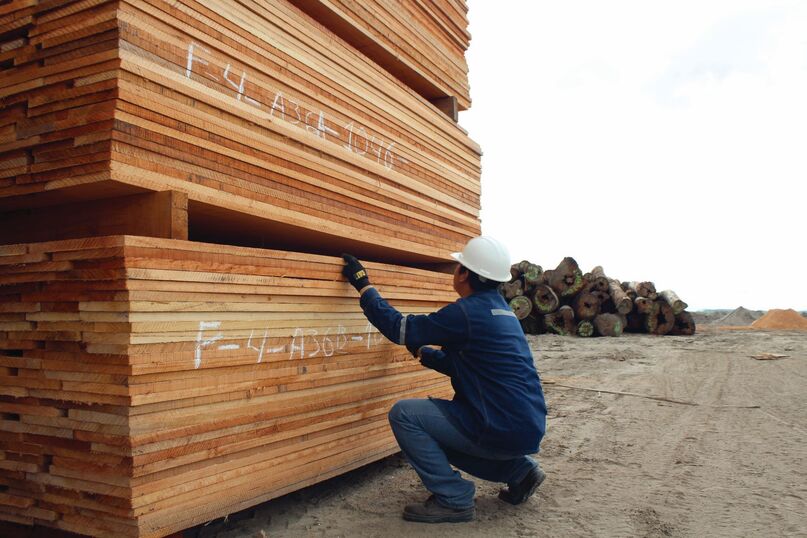Trade transparency boosted by new conversion factors for tropical timber
28 June 2021

A worker at a timber company in Pucallpa, Peru, marks sawnwood bundles. Photo: E. Sangama
Yokohama, 28 June 2021: ITTO has published a report designed to improve the accuracy of reported trade volumes for tropical primary wood products by deriving “conversion factors”—ratios used to covert one form of measure to another—for tropical logs and sawnwood and thereby increase transparency in the tropical wood products trade.
The report, which was prepared by Frances Maplesden and Hamish Pearson, estimates the conversion factors for a wide range of tropical timber species based on weight, using data on wood and bark density and wood moisture content. The derived factors can be used to convert the dry weight of a timber consignment to volume, and vice versa.
Accurate estimates of wood volumes are important for ensuring transparency in the tropical wood products trade because they can be used to calculate national and international wood requirements and balances and to indicate the presence of illegally sourced logs and sawn timber in supply chains. Conversions from volume to weight, on the other hand, are important in biomass and carbon production to determine calorific value content and for comparison with other sources of biomass.
In the study reported in the present publication, 153 selected wood species or species groups were identified as subject to export from tropical producer countries. Conversion factors were calculated for logs and sawnwood for each of these species and species groups using weight per unit volume density under a real-world range of moisture contents (and, for logs, with and without bark).
The study is part of a process of continuous improvement in ITTO statistical reporting, with the development of accurate conversion factors expected to improve the quality of published data.
The report is available at www.itto.int/other_technical_reports.
